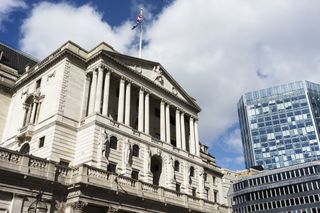Major Changes in UK Mortgage Rates After Interest Rate Cut
The Bank of England has announced a significant reduction in interest rates, lowering it by 0.25 basis points to 4.75%. This decision, taken by the Monetary Policy Committee (MPC), is a response to a notable decline in inflation, which has now dropped below the Bank’s 2% target for the first time in over three years. This marks the second rate cut of the year, following an extended period at a 16-year high of 5.25%.
Impact on Variable Rate Mortgages
Following the Bank’s decision, borrowers with variable rate mortgages will likely find some relief as their monthly repayments decrease slightly. For instance, a tracker mortgage pegged at the base rate plus 0.75% will see its rate reduce from 5.75% to 5.5%. Different lenders will adapt their standard variable rates (SVRs) at their discretion, a crucial factor for those nearing the end of fixed-rate terms.
 The impact of the latest interest rate cut on mortgage rates is significant for borrowers.
The impact of the latest interest rate cut on mortgage rates is significant for borrowers.
Major high-street banks are already beginning to respond. Nationwide has announced a cut to its standard variable rate from 7.74% to 7.49%, effective from December. Similarly, both Lloyds and Halifax’s SVRs will drop from 8.49% to 8.24%. TSB is also aligning its SVR reductions to mirror the base rate cut.
Tracker Mortgages and Their Borrowers
Currently, approximately 8% of British households are on tracker mortgages, and these borrowers can anticipate either an immediate or forthcoming reduction in their interest rates. Given the scale of the changes, many may find their financial burden easing, if only slightly.
For those on standard variable rates, the average household is currently dealing with a rate of 7.01%, equating to monthly repayments of around £701. This information serves as a reminder of the precarious nature of borrowing and the need for consumers to be vigilant in managing their finances.
The Complex Landscape of Fixed Rate Mortgages
While current changes primarily affect variable rates, it is crucial to understand that approximately 82% of mortgage holders have fixed-rate deals. These borrowers will remain unaffected by fluctuations in the base rate until their agreements conclude. However, the fixed-rate landscape may be more complex than it appears. Although conventional wisdom suggests rate cuts should lower fixed rates, the market’s reaction may reflect ongoing uncertainties about future economic conditions.
As noted by mortgage experts, there is apprehension that lenders might actually increase fixed-rate offerings in light of this latest cut and broader market conditions. David Hollingworth from L&C Mortgages remarked, “The challenges introduced by last week’s Autumn Budget and uncertainty following the US election are already influencing rate changes.”
 Mortgage rates may see further fluctuations as lenders react to broader economic signals.
Mortgage rates may see further fluctuations as lenders react to broader economic signals.
What Lies Ahead for Borrowers
As the market acclimatizes to this latest development, borrowers should remain vigilant. Although the base rate cut is good news, forecasting future trends remains a challenge. The MPC, confidently maintaining its cautious stance, is expected to monitor economic indicators closely in the coming months.
The reality for borrowers, especially those considering fixed-rate alternatives, is a matter of patience and strategic planning. A stable borrowing environment appears more of a distant prospect than a near instantie.
Future Implications on Savings Rates
In tandem with mortgage rate modifications, savings rates are also set for adjustment. Following the recent base rate cut, it is expected that savings rates will witness a downward trend. Current averages provided by Moneyfacts indicate that easy-access savings rates now hover around 3.03%, while one-year fixed savers barely exceed 4.22%. These rates reflect the increasing challenges for savers, who may want to evaluate their options carefully.
Economic Climate and Market Reactions
As the UK economy grapples with these changes, the broader implications for the stock market and local businesses will be closely monitored. Lower borrowing costs are generally viewed positively, especially for domestically-focused companies within the FTSE 250 index. However, fluctuations in the global economic landscape, such as the forthcoming announcements from the US Federal Reserve, could create ripple effects that require constant reassessment.
 The UK economy remains under the influence of both domestic and global factors.
The UK economy remains under the influence of both domestic and global factors.
Conclusion
The Bank of England’s recent decision to cut rates marks a pivotal moment for borrowers and the economy alike. Its ramifications will require diligent attention from all stakeholders in the mortgage landscape. As we navigate these changes, awareness and proactivity will be essential for securing favorable outcomes in the evolving financial environment. Keep informed by checking announcements and expert analyses, so your decisions align with the latest data and forecasts.
Stay tuned for more updates on mortgage rates and expert insights into managing your financial future in these uncertain times.


 Photo by
Photo by 











